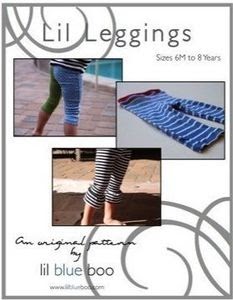Before I get to an actual project I thought it would be helpful to explain the basic functions of a serger. As you may already know, I received my serger as a birthday gift. My mom bought me a Singer Professional 5 that came with 6 additional presser feet.
I was excited and then instantly thought, "wait, what can I do with a serger?"
After a lot of reading and no sewing (yet), I think I know what my serger can do.
Double Chain Stitch
- suitable for straight seams
| Double Chain Stitch |
- provides an elegant fine finish to lightweight fabrics
- when using clear threads the fabric appears to have an invisible edge
Two-thread Overedge (narrow and wide)
- used as a lightweight seam finish or a lightweight seam
- less thread is used and does not imprint on the right side of fabric when pressed
- creates less bulky seams (ideal for sheer or lace fabrics)
| Two-thread Overedge (narrow and wide) |
Three-thread Overlock (narrow)
- most commonly used because of its versatility
- provides professional seam finish to woven fabrics
- beneficial in preventing loosely woven fabrics from unraveling
- offers unlimited decorative capabilities
- recommended for finishing seams but not reinforcing the seam
| Three-thread Overlock (narrow) |
Three-thread Flatlock (narrow and wide)
- used decoratively to achieve the look of applied trim
- special decorative threads are used for a textured and dramatic effect
| Three-thread Flatlock (narrow) |
| Three-thread Flatlock (narrow) |
| Three-thread Flatlock (narrow) |
- stretches with the fabric, seam will not break when fabric is stretched
- ideal for super-stretch knits like those used on swimwear or athletic clothing
| Three-thread Ultra Stretch Mock Safety |
Four-thread Ultra Stretch Mock Safety
- stronger than the Three-thread Ultra Stretch Mock Safety stitch
- the additional thread provided added strength to the seam (good choice for knits and wovens)
- works well when applying ribbing to garment (often seen on cuffs, collars, and waistbands)
Four-thread Ultra Stretch Mock Safety
|
Four-thread Safety Stitch
- alternative to the Five-thread Safety Stitch
- offers same type of Two-thread Chainstitch
- used when sewing a medium weight woven fabric because the stitch is less bulky
Four-thread Safety Stitch
|
- combination of a Two-thread Chainstitch and Three-thread Overlock stitch
- Suitable for woven fabrics and provides a durable seam for heavy weight fabrics (denim)
| Five-thread Safety Stitch (wide) |
- same benefits as Five-thread Safety Stitch (wide)
| Five-thread Safety Stitch (narrow) |
- often seen in ready to wear garments
- two needles crate parallel rows of topstitching and one looper sews an edge finish on underside
| Cover Stitch (narrow) |
Cover Stitch (wide)
- same benefits as Cover Stitch (narrow)
| Cover Stitch (wide) |
Triple Cover Hem
- professional and creative triple topstitch
- three needles create parallel rows of topstitching and one looper sews an edge finish on underside
- ideal for heavier fabrics
- traditionally used in home decorating
- adds unique accent for garment constructions
| Triple Cover Hem |
Three-thread Rolled Hem
- used to finish edges of scarves, ruffles, table linens, and some garments
- suitable for lightweight to medium weight fabrics
- used for pintucks
| Three-thread Rolled Hem |
My serger came with a beading foot (used for sewing on beads, sequins, pearls, and thick cord), a blind hem foot (used for hemming skirts, paints, and other sewing projects in one easy operation), a cording foot (used for sewing piping betwe3en two layers of fabric in one easy operation), an elastic foot (used for inserting elastic into a seam), a shirring foot (used for shirring and gathering), and a taping foot (used for inserting a tape into seams that will stretch easily).
Now that I know just what I can do with my serger, I'm excited to start sewing! This week I'll be using my favorite Lil Blue Boo patterns to make some spring clothes for my daughter.






6 comments:
Wow, I didn't know a serger did so many things! Now, I really want one! Great post, thanks for sharing!
Thanks for the great post. I have a serger for over a year and still haven't figure out how to use it...shame on me!!!
I have this same serger and cannot get the tension set correctly... any suggestions? Thanks
Well I'm glad I'm not the only one intimidated by it. I got it out of the box.....but that's about it lol
Yes, this is my serger, the Singer Professional 5 and it scares me to pieces. I got it as a Christmas gift 2013 and yikes, it's still in the box. This is really good information! Thank you
my first time here am senior just Horton intrested in see her hope have one one day fun learn this great inspires me to want to learn something new one day.
Post a Comment